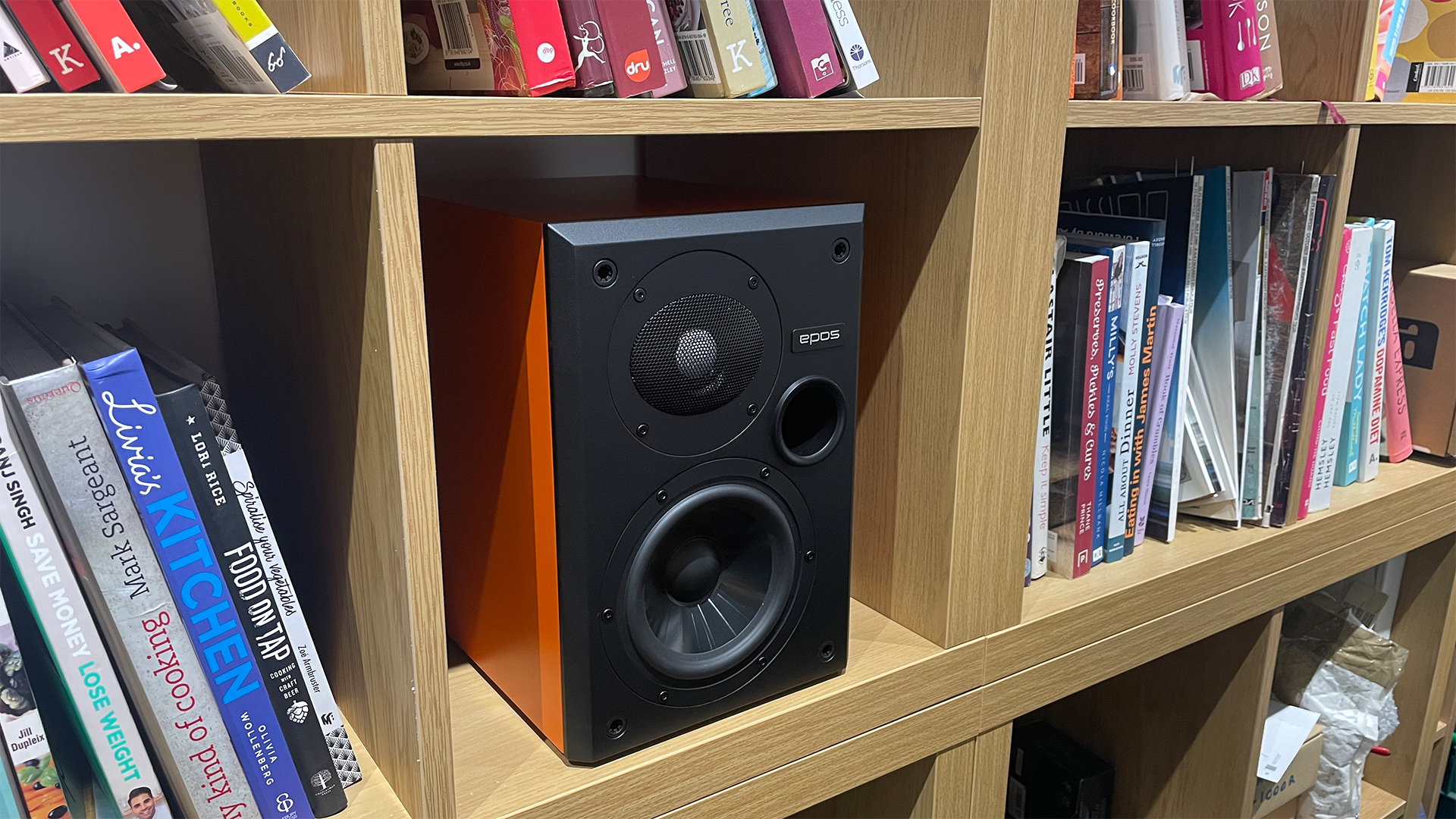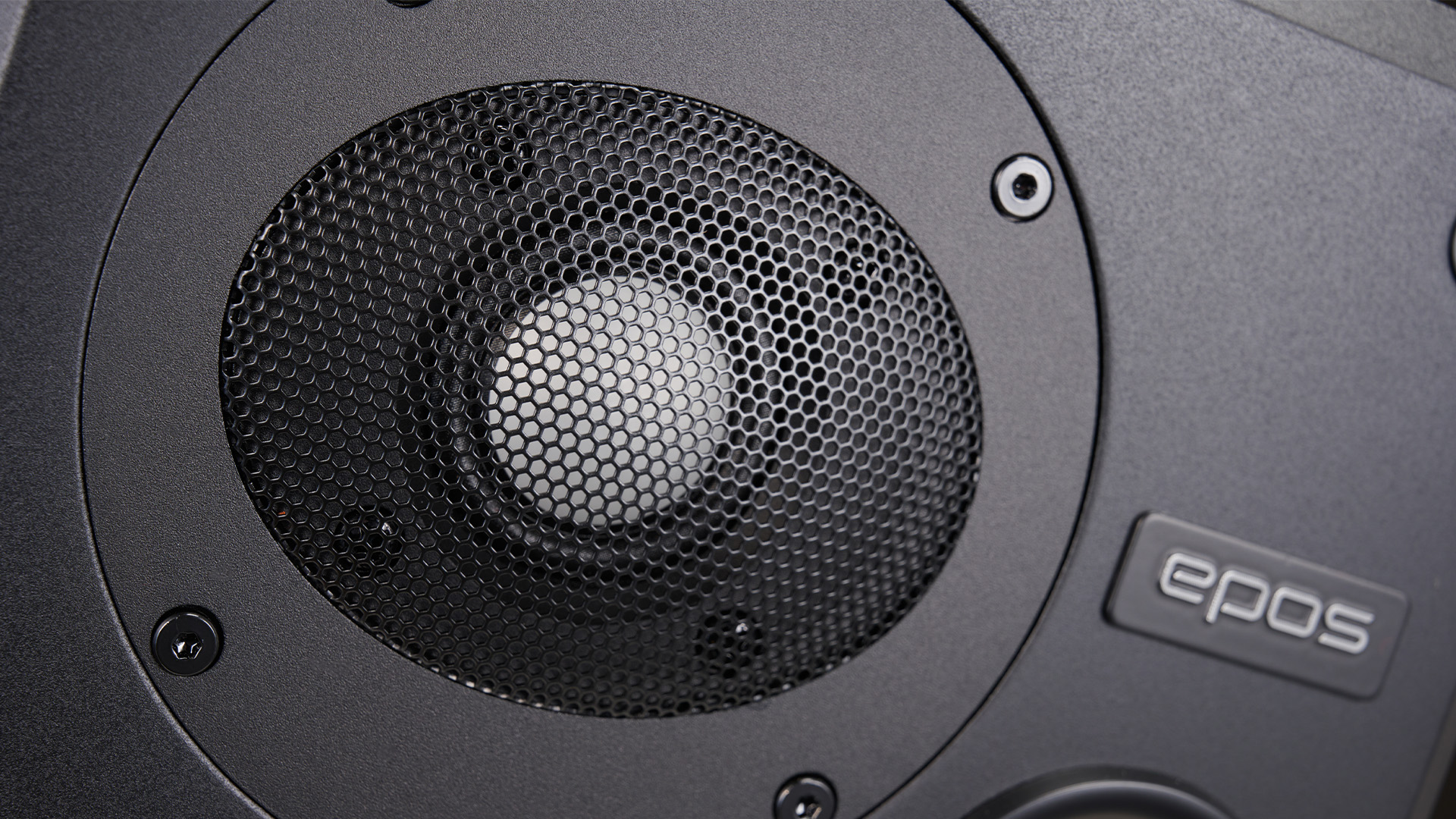
Most people choose small speakers because they have a modest listening space or don’t want the speakers to dominate the room. Given these clear requirements, it is ironic that most compact models are still designed specifically to sound best when placed well away from walls. Some manufacturers even go as far as to call their smaller offerings ‘bookshelf’ designs, but take it from us that the vast majority of these won’t have been optimised to work there.
Why would most speaker companies take such a contradictory design route? From an engineer’s point of view, doing things this way makes the design much easier given that they can (essentially) ignore the effects of the walls and focus on optimising performance. Given that the type of material used in the wall and even the support can make a significant difference to the way a speaker sounds, it is easy to understand why most prefer to avoid the complications. Epos hasn’t shirked the challenge in its new ES-7N standmounters.
Compatibility

The company has taken a practical approach to the situation, and it takes the form of a metal toggle switch on the ES-7N’s back panel. Click it up and the speakers are tuned for what the company calls a semi-free standing position, with the speakers on taller 70cm stands, typically 30-50cm from the rear wall. Most alternatives tend to need around 20-50cm more into the room to sound right. Move the switch down and the output through midrange and treble frequencies is raised relative to the bass, giving a surprisingly even sound when the speakers are used up against a wall or on (or even in) a bookshelf.
Our first experience with the ES-7N speakers saw them placed inside of Ikea’s larger Kallax shelving units and it was surprising just how capable and even they sounded at the time.
Given that there is a change in the relative levels of bass and the higher frequencies, it is no surprise to find that the Epos’s sensitivity changes according to the position of the switch. They are rated at 89dB/W/m in the close-to-wall position and drop to 86dB/W/m when configured for semi-free space. Either way, their nominal impedance is rated at 4 ohms, which suggests that these speakers are demanding in terms of electrical load, but look at the published impedance curve and you will find that it is relatively gentle. We had no issue driving them with Rotel’s 30 watts per channel budget A8 integrated (£399 / $449 / AU$649), though given the Epos’s capabilities and price it is clear that more ambitious electronics are required.
Design & engineering

Let’s get more into the nuts and bolts of the ES-7N’s design. Its tweeter is a 28mm ceramic-coated aluminium dome, the same as used in the company’s high-end ES-14N model (£3750 / $4700 / AU$7495), and unusually does without ferrofluid for improved dynamic performance. Below 2kHz, a front-ported 13cm mica-loaded polypropylene mid/bass unit takes over. As the cone is injection-moulded, Epos has a great deal of freedom to optimise the profile and thickness to get precisely the response required. In addition, the mid/bass has a double-magnet motor (to control stray fields and increase the force on the voice coil), a low-loss rubber cone surround and a high-temperature Nomex spider.

Type Standmounts
Drive units 28mm ceramic-coated aluminium dome tweeter, 13cm loaded polypropylene mid/bass
Ported? Yes (front)
Bi-wire? No
Impedance 4 ohms
Sensitivity 86/89 dB/W/m
Dimensions (hwd) 29 x 20 x 27cm
Weight 7.6kg
Finishes x 4 (orange satin, walnut, white satin, black satin)
The Epos’s 29cm tall cabinet is nicely made. Its panels are made of two layers of 8mm thick MDF separated by a high-loss damping material. There is an additional reinforcement in the form of a wooden block added to the top panel and a brace to help rigidity. At the base, you can screw in a quartet of small rubber feet, which provide decoupling when the speakers are used in a bookshelf or on top of conventional furniture. The ES-7N is available in four finishes (orange, black, white satin and walnut), and looks neat in all of them, but not particularly luxurious to our eyes.
We try the speakers on dedicated stands around 40cm from the rear wall and inside and on bookshelves, and can report that they sound best when used out into the room in a conventional position. That’s no surprise, of course, but it is interesting just how close to that optimum the Epos get when used elsewhere. There is a small loss in overall clarity and precision, while stereo imaging isn’t as expansive, but in most ways, we enjoy the result almost as much. It is obvious that a great deal of thought has gone into how to make the speakers so flexible over placement, and equally clear that the company has succeeded.



Sound

These are relatively small speakers and so can’t compete with larger designs such as KEF’s three-way R3 Meta when it comes to bass weight, overall scale and dynamic reach. Yet, they do so much well that we don’t really mind the losses. The ES-7N are bold and confident performers that resolve high levels of detail and organise it in a cohesive and musical way. Play Kendrick Lamar’s Not Like Us and the Epos kick like a mule. They sound taut and punchy with music such as this, delivering the song’s jumpy rhythm track in a wonderfully surefooted manner. There is plenty of drive here and the speakers are great at conveying the music’s varying momentum. Lamar’s voice cuts through with clarity, every word of his passionate delivery is easy to follow.
Considering that these are small speakers with a modestly-sized 13cm mid/bass unit, it is surprising just how solid and full-bodied they sound at low frequencies. They may not dig as deeply as their KEF rival, but they do sound more controlled and grippy. Comparison with the similarly priced and sized Neat Petite Classic is interesting. We are big fans of the Neat’s musical and rhythmic presentation but the ES-7N are good enough to make them sound a little blurred and soft with it.
Switching to Micheal Giacchino’s It’s Raining Vengeance from The Batman OST, the Epos prove capable of delivering the music's broad dynamic sweeps and deeply oppressive feel superbly. The stereo imaging is expansive and precise, though some care needs to be taken over the toe-in angle to optimise things. KEF’s Uni-Q driver delivers a broader soundstage with a wider listening spot with less effort, but that is the main advantage of such a co-axial driver arrangement.

The Epos are supplied in mirror-imaged pairs and we experiment with the speakers positioned with the tweeters on the inside edge and then the outer. We prefer them as the company recommends, with the tweeters positioned on the inside. This configuration renders more solid and focused results.
Tonally, the ES-7N have a smooth, surprisingly full-bodied balance. While they are revealing of system and recording shortcomings they are refined enough never to make a meal of things. This means that they will produce good results with modest electronics, as our stint with Rotel’s budget A8 integrated proves, though if you want to hear the best from them, the starting point should really be something like Naim’s ND5 XS 2/Nait XS 3 streamer/amplifier combination at least. Move up to even more premium sources and amplification – we used our reference Naim ND555/555 PS DR music streamer/Burmester 088/911 MkIII amplifier – and the Epos shine even brighter. Make no mistake, there is plenty of sonic stretch in this design.
Verdict

Overall, the Epos ES-7N are charmers. They are small, hugely capable and surprisingly unfussy in use. Pamper them with careful placement and a top-quality signal and they will deliver an excellent performance that’s good enough to challenge the very best alternatives at this level. However, even when the conditions aren’t optimised, they continue to excel. That’s a rare talent that should be celebrated. Highly recommended.
First reviewed: October 2024. Updated review: November 2024.
SCORES
- Sound 5
- Build 5
- Compatibility 5
MORE:
Read our review of the Neat Petite Classic
Also consider the KEF R3 Meta
Read our ATC SCM 11 review
Best hi-fi speakers: budget to premium models tested by our expert reviewers







